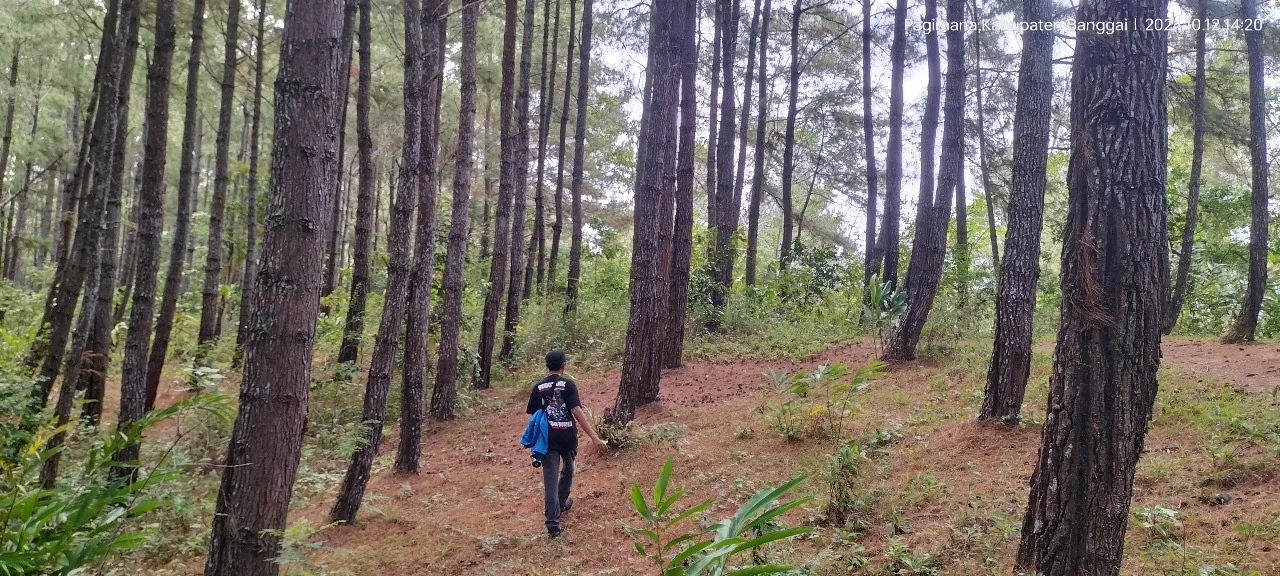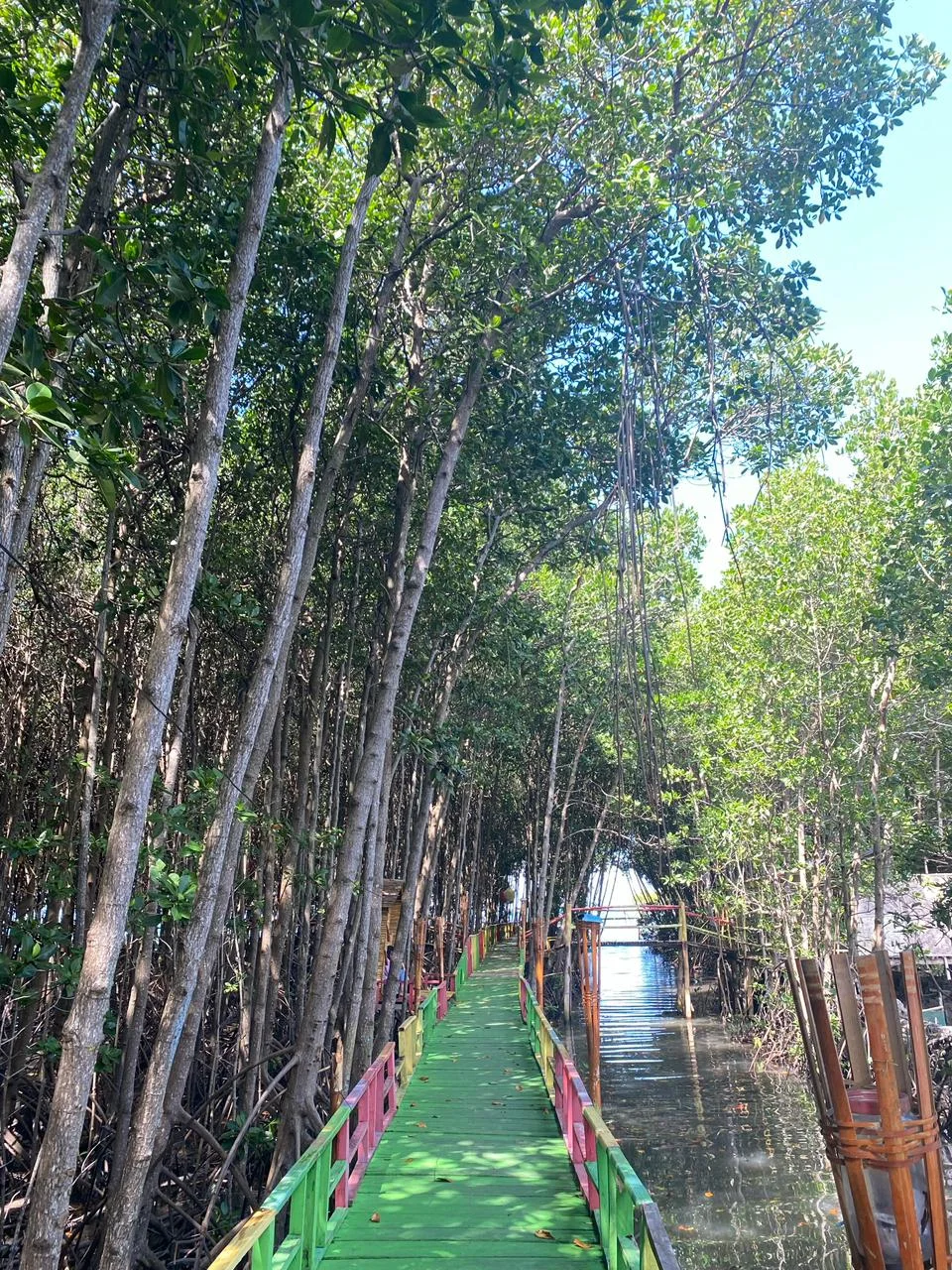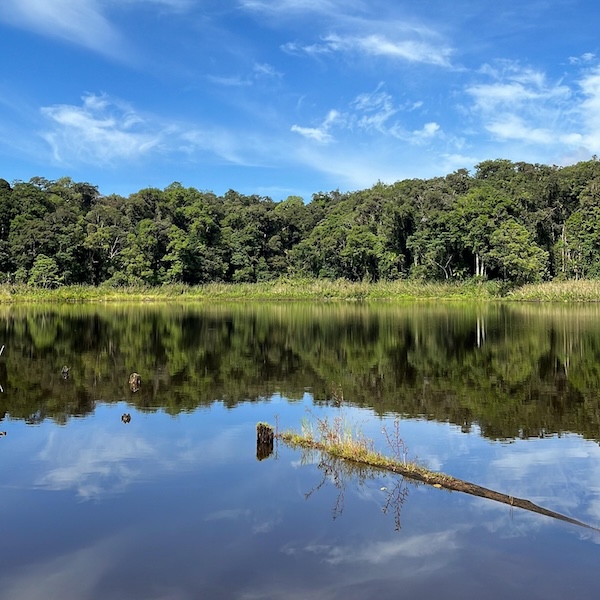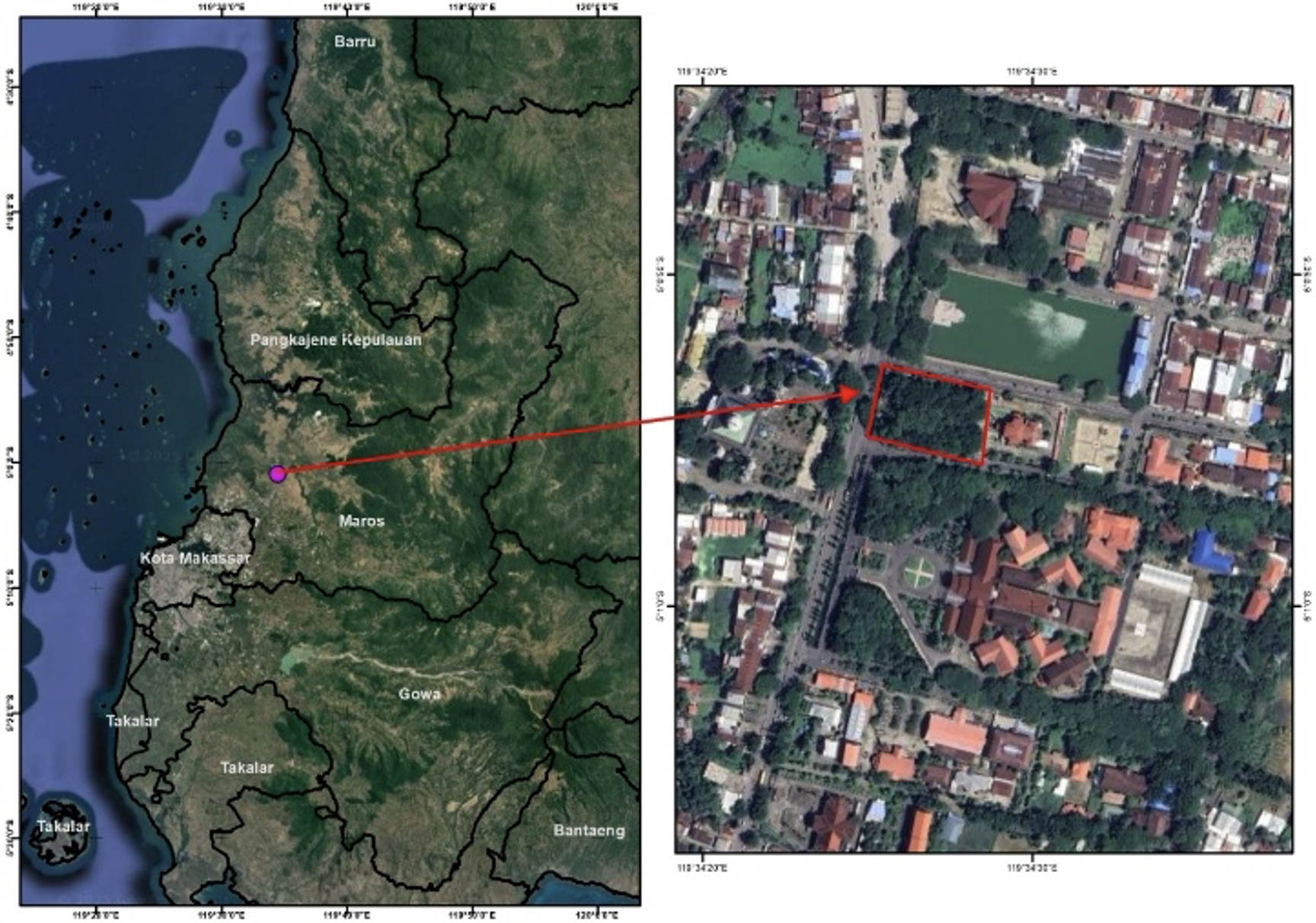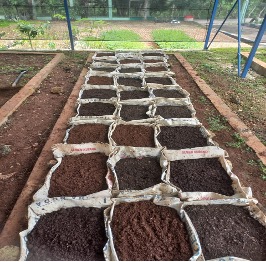Composition and Structure of Tiwoho Mangrove Vegetation at Bunaken National Parkional Park (Komposisi Dan Struktur Vegetasi Mangrove Tiwoho di Kawasan Taman Nasional Bunaken)
Abstract
Tiwoho mangrove forest islocated in north coast of North Sulawesi province.This area functions as life buffer system for community and sustainability of Bunaken National Park. Due to the important and strategic roles of mangrove in protection and ecological functions, therefore, it is needed to know scientific information about mangrove population dynamics. This research aims to know the vegetation composition and structure vegetation of Tiwoho mangrove forest. Data collection used 20x20 m sample plots that were sistematically laid from the sea to the land side up to the highest tidal line. Distance between plots along 25 m. Results showed that at tree level Sonneratia alba had the highest Important Value Index (IVI) of 206,88 % and Brugueira sp of 46,06 %. Although Rhizopora apiculata value is lower than Brugueira sp. But the values of relative frequency of these species are almost similar. It means that both species are frequently found in observation plots. Rhizophora apiculata dominate at pole and sapling levels, but frequency of occurance this species is lower than Brugueira sp in pole level.
الحقوق الفكرية (c) 2015 Jurnal Wasian

هذا العمل مرخص بموجب Creative Commons Attribution-NonCommercial 4.0 International License.
Copyright and License
All articles published in Wasian Journal are the property of the authors. By submitting an article to Wasian Journal, authors agree to the following terms:
-
Copyright Ownership: The author(s) retain copyright and full publishing rights without restrictions. Authors grant the journal the right to publish the work first and to distribute it as open access under a Creative Commons Attribution 4.0 International License (CC BY 4.0).
-
Licensing: Articles published in Wasian Journal are licensed under a Creative Commons Attribution 4.0 International License (CC BY 4.0). This license allows others to share, copy, and redistribute the material in any medium or format, and adapt, remix, transform, and build upon the material for any purpose, even commercially, provided that proper credit is given to the original author(s) and the source of the material

This work is licensed under a Creative Commons Attribution 4.0 International License. -
Author's Rights: Authors are permitted and encouraged to post their work online (e.g., in institutional repositories or on their website) prior to and during the submission process, as it can lead to productive exchanges and greater citation of published work.
-
Third-Party Content: If your article contains material (e.g., images, tables, or figures) for which you do not hold copyright, you must obtain permission from the copyright holder to use the material in your article. This permission must include the right for you to grant the journal the rights described above.
-
Reprints and Distribution: Authors have the right to distribute the final published version of their work (e.g., post it to an institutional repository or publish it in a book), provided that the original publication in Wasian Journal is acknowledged.
For the reader you are free to:
- Share — copy and redistribute the material in any medium or format for any purpose, even commercially.
- Adapt — remix, transform, and build upon the material for any purpose, even commercially.
- The licensor cannot revoke these freedoms as long as you follow the license terms.
Under the following terms:
- Attribution — You must give appropriate credit , provide a link to the license, and indicate if changes were made . You may do so in any reasonable manner, but not in any way that suggests the licensor endorses you or your use.
- No additional restrictions — You may not apply legal terms or technological measures that legally restrict others from doing anything the license permits.
Notices:
You do not have to comply with the license for elements of the material in the public domain or where your use is permitted by an applicable exception or limitation .
No warranties are given. The license may not give you all of the permissions necessary for your intended use. For example, other rights such as publicity, privacy, or moral rightsmay limit how you use the material.
الأعمال الأكثر قراءة لنفس المؤلف/المؤلفين
- Isdomo Yuliantoro Isdomo , Nurlita Indah Wahyuni Nurlita , Perception and Adaptation of Coastal Community Toward Climate Change at Sarawet Village of North Minahasa Regency , Jurnal Wasian: مجلد 6 عدد 2 (2019): December
- Margaretta Christita Margaretta, Iwanuddin Iwanuddin Iwanuddin , Yermias Kafiar Yermias, Supratman Tabba Supratman , Identification of Water Bacteria from Nickel Post Mining in East Halmahera , Jurnal Wasian: مجلد 5 عدد 1 (2018): June
- Nurlita Indah Wahyuni Nurlita , Abdul Wahid Hasyim Hasyim, Soemarmo Soemarmo Soemarmo , Dynamic of the Land Use and Land Cover Change in Banyuwangi Regency From 1995-2019 , Jurnal Wasian: مجلد 8 عدد 2 (2021): December
- Supratman Tabba Supratman , Lis Nurrani Nurrani, Distribution of Avifauna in Aketajawe Lolobata National Park Based on Zone and Land Cover Typology , Jurnal Wasian: مجلد 3 عدد 1 (2016): June
- Nurlita Indah Wahyuni Nurlita , Yermias Kafiar Yermias , Species Composition and Structure of Secondary Forest at Nunuka, North Bolaang Mongondow , Jurnal Wasian: مجلد 4 عدد 1 (2017): June
- Nurlita Indah Wahyuni Wahyuni, Hendra Susanto Mokodompit Hendra , Structure, Composition and Diversity of Tree Species at Inobonto Poigar I Production Forest, Forest Management Unit of Poigar, North Sulawesi , Jurnal Wasian: مجلد 3 عدد 1 (2016): June
- Lis Nurrani Lis Nurrani, M Bismark Bismark, Supratman Tabba Supratman , Institution and Communities Participation in the Conservation Of Mangrove/Case Study in Tiwoho Village, North Province , Jurnal Wasian: مجلد 2 عدد 1 (2015): March
- Lis Nurrani Lis Nurrani, Halidah Halidah, Supratman Tabba Supratman, Ethnic Influence Against Land Use Patterns and Its Contribution to Community Income in The Aketajawe Lolobata National Park (Pengaruh Etnis Terhadap Pola Pemanfaatan Lahan Dan Kontribusinya Bagi Pendapatan Masyarakat Di Taman Nasional Aketajawe Lolobata) , Jurnal Wasian: مجلد 2 عدد 2 (2015): December



